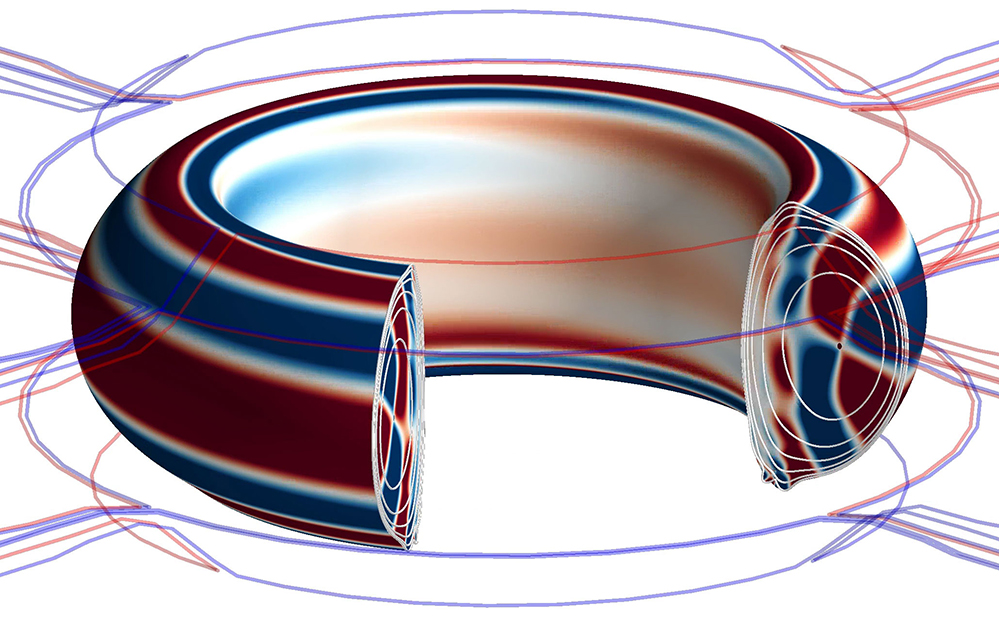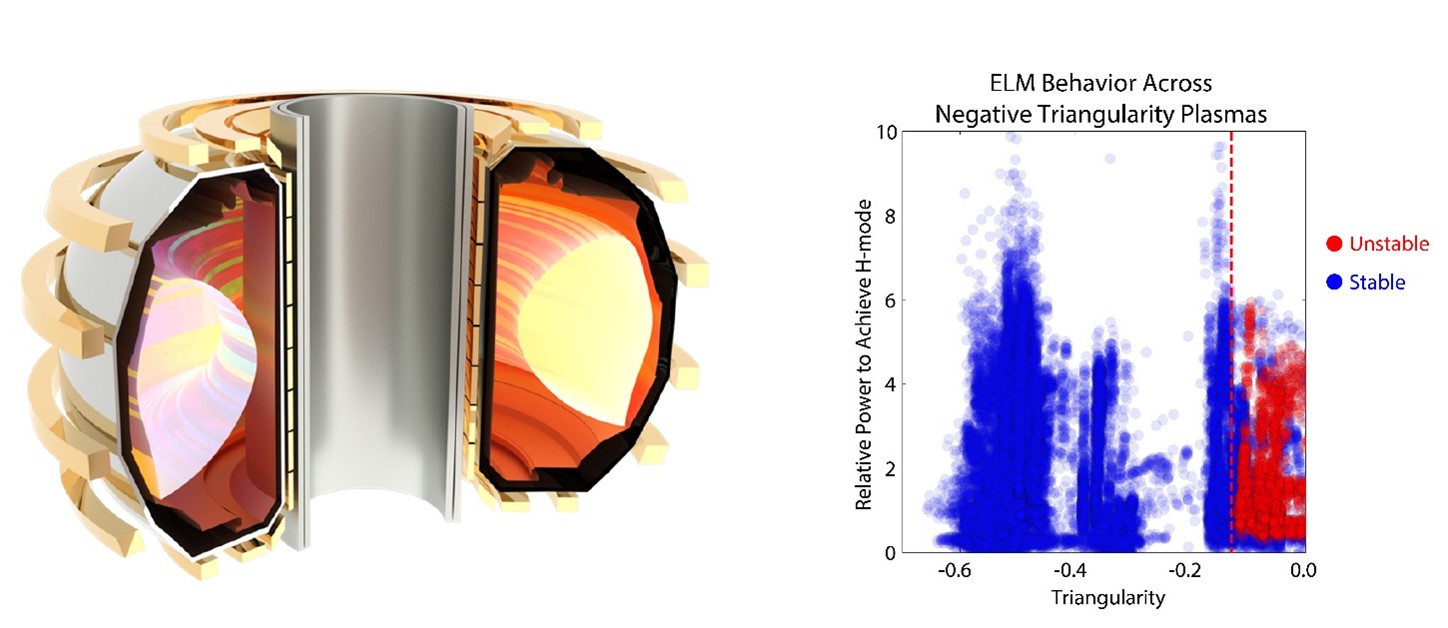Discovered: Optimal Magnetic Fields Suppress Instabilities in Tokamak Plasmas
U.S. and Korean scientists show how to find and use beneficial 3-D field perturbations to stabilize dangerous edge-localized modes in plasma.

The Science
Tokamak facilities rely on round magnetic fields to confine the hot, charged plasma gas that fuels fusion reactions. Inserting a “non-round” 3-D magnetic field greatly improves tokamak performance. Such fields can stabilize dangerous instabilities, called edge-localized modes (ELMs), that can seriously damage plasma-facing components. However, the designer magnetic fields can result in unwanted side effects, such as excessive leakage of heat or complete termination of the plasma. A team from the United States and Korea found an effective method to predict the correct fields. The team’s method eliminates instabilities and prevents the onset of unwanted side effects. Experiments have validated the predictions.
The Impact
Which magnetic field do you use to stabilize the plasma? There are virtually unlimited possibilities. Moreover, most 3-D fields will degrade or destabilize fusion plasmas. This study shows how to identify good 3-D fields and eliminate bad or ineffective ones with an efficient numerical method. The method essentially turns the complex optimization problem into a simple matrix exercise. It provides the correct matching metrics for physics in the neighborhood of resonant surfaces. An important application will be finding good 3-D coils outside the vessel of future fusion reactors. Why? Present in-vessel 3D coil options will not be feasible beyond ITER, the international fusion experiment being built in France.
Summary
An important step for simplifying the complex production of 3-D fields in a tokamak is to build a matrix that relates the external 3-D magnetic field perturbations with the resonant coupling to different surfaces in the plasma. An ideal perturbed equilibrium code is developed for this purpose and was used to build the coupling matrix and define the optimizing conditions for experiments at the Korean Superconducting Tokamak Advanced Research (KSTAR) facility, one of the world's most advanced superconducting tokamaks. The optimizing principle is that the edge resonant field must be greater than the ELM suppression threshold, while the core resonant field must be below the threshold for disruptive core instabilities, called locked modes. The key assumption in the modeling is that the thresholds are independent of the details of the 3-D fields. The experiments on KSTAR validated the basic assumption.
In KSTAR, there are three rows of in-vessel coils that produce six independent 3-D coil variables, making it virtually impossible to explore all feasible 3-D field options without a simple metric for optimization. The predicted ELM suppression window occupies only a tiny percentage of the whole volume of available phase space for the 3-D fields, and the KSTAR experiments dramatically validated the model predictions. Scientists are now applying these optimization methods to ITER and other reactor designs to identify the most effective fields to suppress ELMs and avoid dangerous disruptions.
Contact
Jong-Kyu Park
Princeton Plasma Physics Laboratory
jpark@pppl.gov
Funding
This work is supported by the Department of Energy, Office of Science, Office of Fusion Energy Science and the Korean Ministry of Science and Technology. NFRI operates the Korean Superconducting Tokamak Advanced Research (KSTAR) facility under the Korean Ministry of Science and ICT and is devoted to developing the scientific and engineering basis for the realization of fusion energy. This work made use of resources at two Department of Energy Office of Science user facilities: DIII-D National Fusion Facility and the National Spherical Torus Experiment.
Publications
J.K. Park, et al., “3D field phase space control in tokamak plasmas,” Nature Physics (2018). [DOI: 10.1038/s41567-018-0268-8]
Related Links
Princeton Plasma Physics Laboratory press release: Discovered: Optimal magnetic fields for suppressing instabilities in tokamaks
KSTAR website: http://kstar.nfri.re.kr
Highlight Categories
Program: FES
Performer: DOE Laboratory , SC User Facilities , FES User Facilities , DIII-D , NSTX
Additional: Collaborations , International Collaboration



